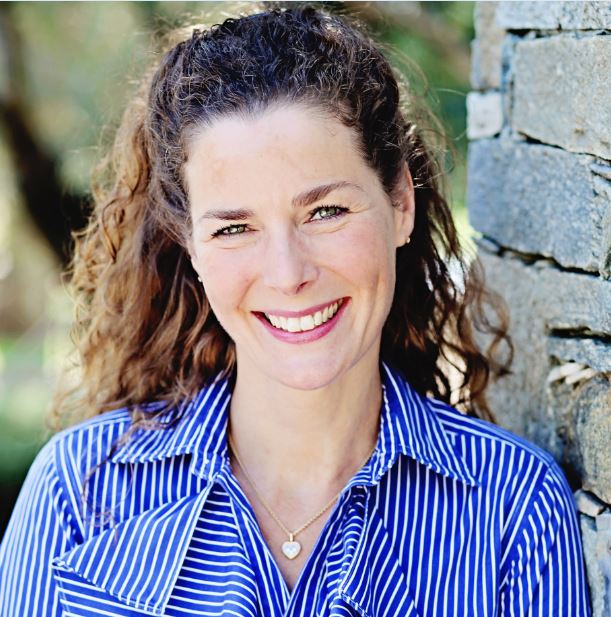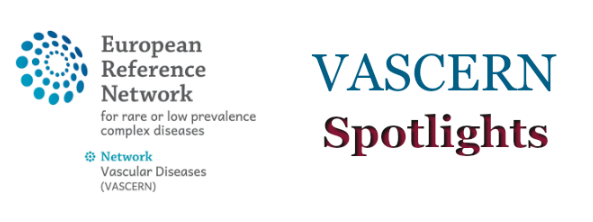
Our first VASCERN Spotlights interview of 2020 is with no other than Pernille Henriksen, our European Patient Advocacy Group (ePAG) co-chair for the Primary and Pediatric Lymphedema Working Group (PPL WG), who joined VASCERN in 2019. Pernille tells us how she became involved with VASCERN, her most memorable moment to date and what she hopes VASCERN and the other ERNs can achieve in order to improve the lives of rare disease patients.
1. How did you become involved in the VASCERN project?
I had seen my predecessor and fellow patient advocate post information on Instagram for a while about her activities in the Primary and Pediatric Lymphedema Working Group (PPL WG) and I was intrigued to find out more. I read about VASCERN on the website and was immediately interested in joining as I could see the benefits of including the patients’ point of view in the work of the European Reference Networks. I believe patients can make an impact on our care this way. I needed the endorsement of a patient association and so I decided to also become a candidate for the board of the Danish Lymphoedema Association (DALYFO). I was elected at the general assembly of DALYFO in March 2019 and by May 2019 I was the new ePAG co-chair of the PPL WG. From then on it was all about getting more patient advocates and patient associations to join. We are now six patient advocates for PPL, six in the ePAG community and counting.
As a patient advocate it is my role to present the patients’ point of view and bring our unmet needs to the clinicians’ attention.
2. How do you as an ePAG patient advocate participate in the activities of VASCERN?
As a patient advocate I participate in the monthly ePAG meetings and as ePAG co-chair for PPL I participate in the monthly PPL-WG meetings. Furthermore the ePAG co-chairs and the PPL ePAG group also have monthly meetings. So far I have also had the pleasure of attending the face to face meeting in London and VASCERN days in Brussels, Belgium. As a patient advocate it is my role to present the patients’ point of view and bring our unmet needs to the clinicians’ attention. The PPL ePAG also collaborates on our own very patient-driven projects.
3. What is one thing that you would like the general public to know about the reality of living with a rare disease?
Living with a rare disease can be difficult…especially for those who are still waiting for a diagnosis. It took me 3 years to get a diagnosis but for others it has taken much longer. I often hear stories from patients of how they had been going from one doctor to another for years before finally stumbling across their diagnosis on the internet. For parents of children who have lymphedema in particular, this is a journey which is very agonising. Reducing the time it takes to get a diagnosis is something that we are working on in VASCERN.
4. Can you tell us a little about your rare disease and/or the patient association that you represent?
Lymphedema is a chronic, progressive condition for which there is currently no cure. Due to a defect in the lymphatic system, fluid builds up in the tissue and creates swelling. This can be in the upper or lower limbs, in one or more limbs, in the face, the genitals and even encompass the whole body. Primary lymphedema in children is very rare and can sometimes have other associated manifestations. I represent the Danish Lymphoedema Association with about 600 members. It was founded in 1992 by patients who wanted to enable more patients to receive the right treatment for their condition. We still must fight for the rights of patients, but things are moving in the right direction.
We all work so hard as patient advocates but meeting each other in person brings us closer to our common goals. We are inspired to keep working in order to ensure patient centered care in Europe and even beyond.
5. What has been your most memorable moment as an ePAG patient advocate so far?
The most memorable moment was when I met with my fellow ePAG patient advocates at VASCERN days last year. It was a great pleasure to meet so many face to face and exchange best practices, ideas, concerns and hopes for the future. We all work so hard as patient advocates but meeting each other in person brings us closer to our common goals. We are inspired to keep working in order to ensure patient centered care in Europe and even beyond.
6. As a patient advocate, what is your hope for VASCERN and for the ERNs in general?
I trust that the processes set in motion and the outstanding work of the experienced and capable people working within VASCERN and the European Reference Networks, including the patient advocates, will lead to the fulfillment of the overall objectives of the ERNs. As a result of our network I hope that patients will experience a reduction in diagnostic delay, the awareness of lymphedema will improve among healthcare professionals across Europe, medical knowledge will increase by the sharing of experience and best practices, and that there will be more clinical trials initiated which can hopefully one day lead to a cure for lymphedema.




